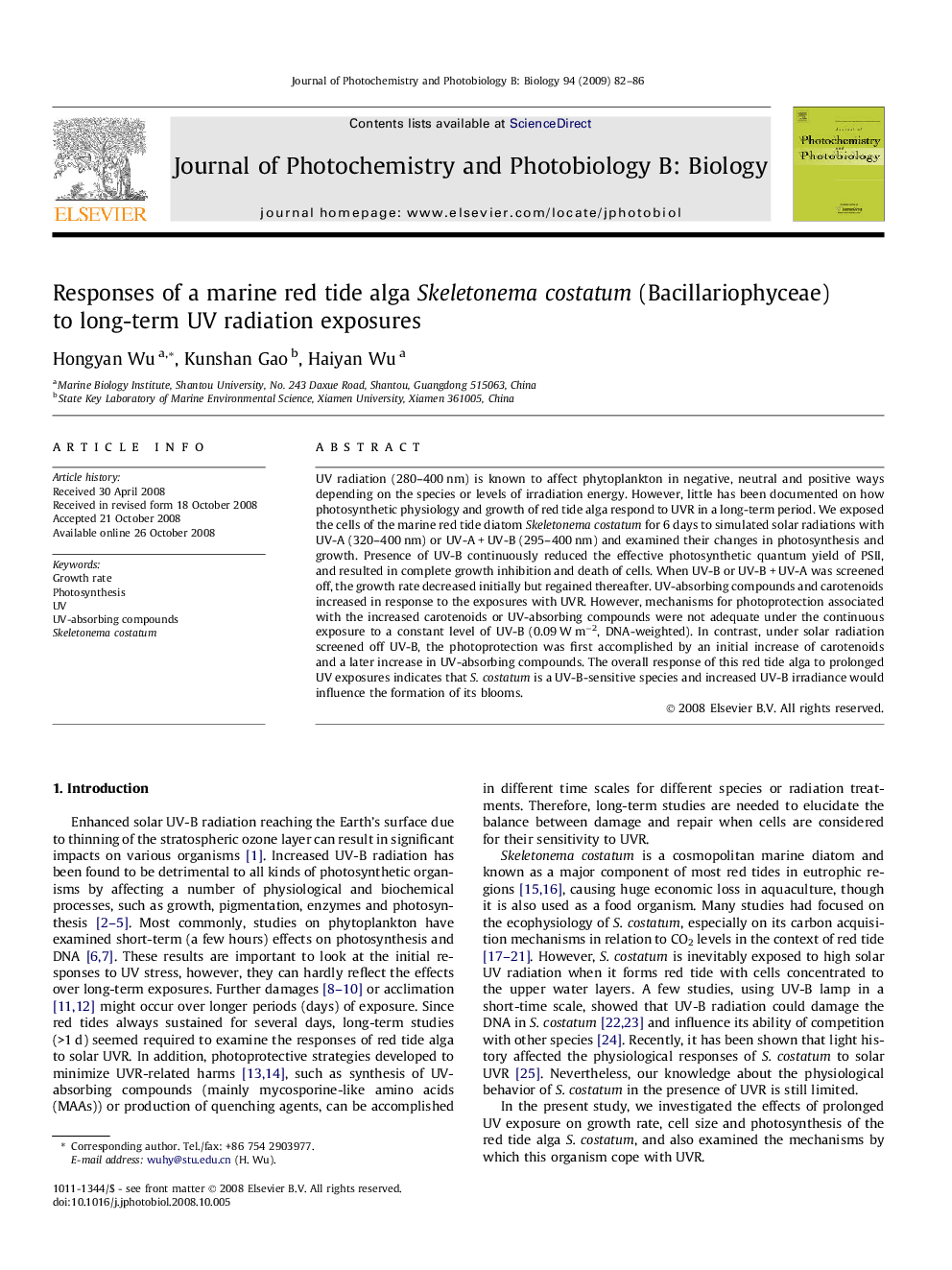| Article ID | Journal | Published Year | Pages | File Type |
|---|---|---|---|---|
| 30392 | Journal of Photochemistry and Photobiology B: Biology | 2009 | 5 Pages |
UV radiation (280–400 nm) is known to affect phytoplankton in negative, neutral and positive ways depending on the species or levels of irradiation energy. However, little has been documented on how photosynthetic physiology and growth of red tide alga respond to UVR in a long-term period. We exposed the cells of the marine red tide diatom Skeletonema costatum for 6 days to simulated solar radiations with UV-A (320–400 nm) or UV-A + UV-B (295–400 nm) and examined their changes in photosynthesis and growth. Presence of UV-B continuously reduced the effective photosynthetic quantum yield of PSII, and resulted in complete growth inhibition and death of cells. When UV-B or UV-B + UV-A was screened off, the growth rate decreased initially but regained thereafter. UV-absorbing compounds and carotenoids increased in response to the exposures with UVR. However, mechanisms for photoprotection associated with the increased carotenoids or UV-absorbing compounds were not adequate under the continuous exposure to a constant level of UV-B (0.09 W m−2, DNA-weighted). In contrast, under solar radiation screened off UV-B, the photoprotection was first accomplished by an initial increase of carotenoids and a later increase in UV-absorbing compounds. The overall response of this red tide alga to prolonged UV exposures indicates that S. costatum is a UV-B-sensitive species and increased UV-B irradiance would influence the formation of its blooms.
